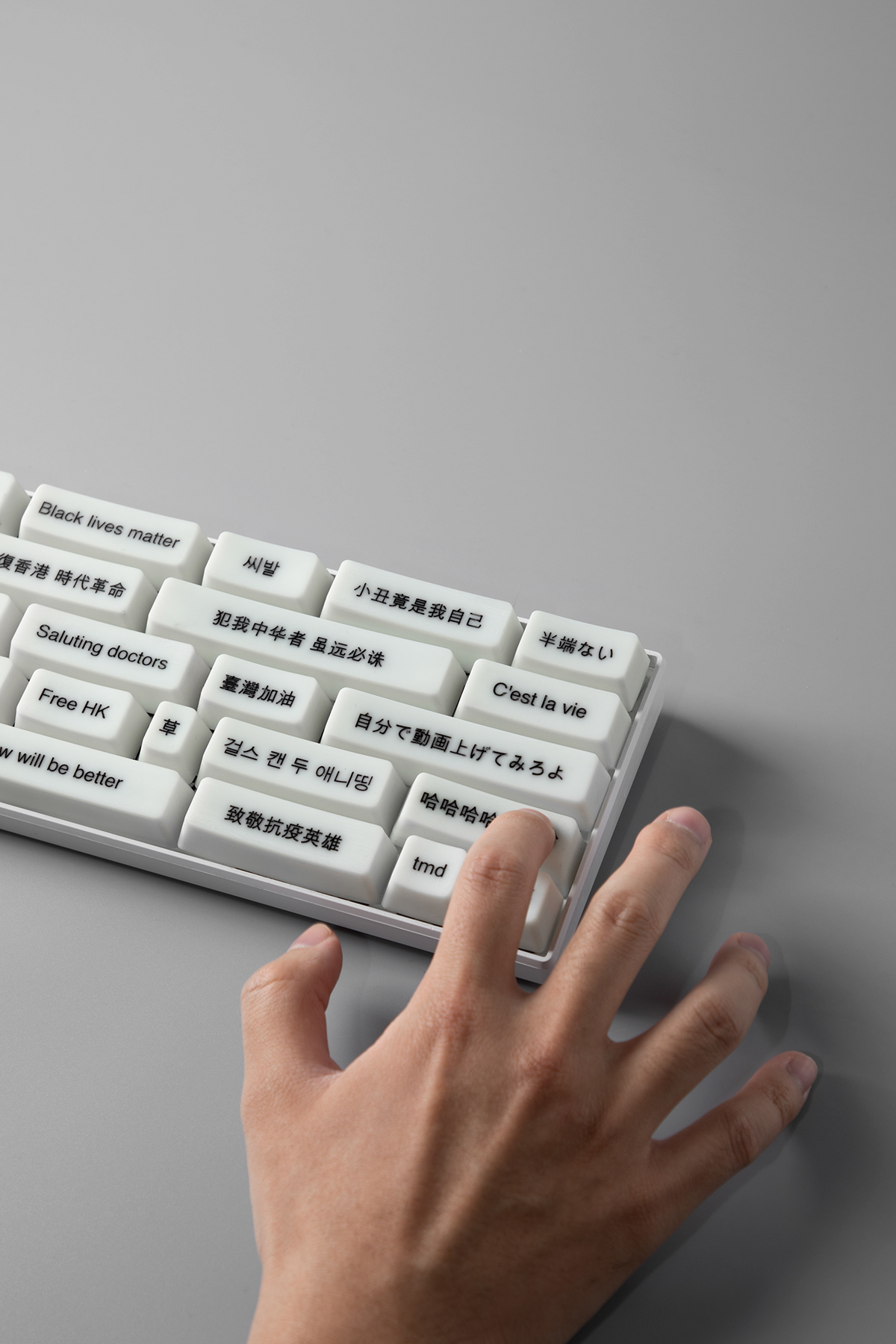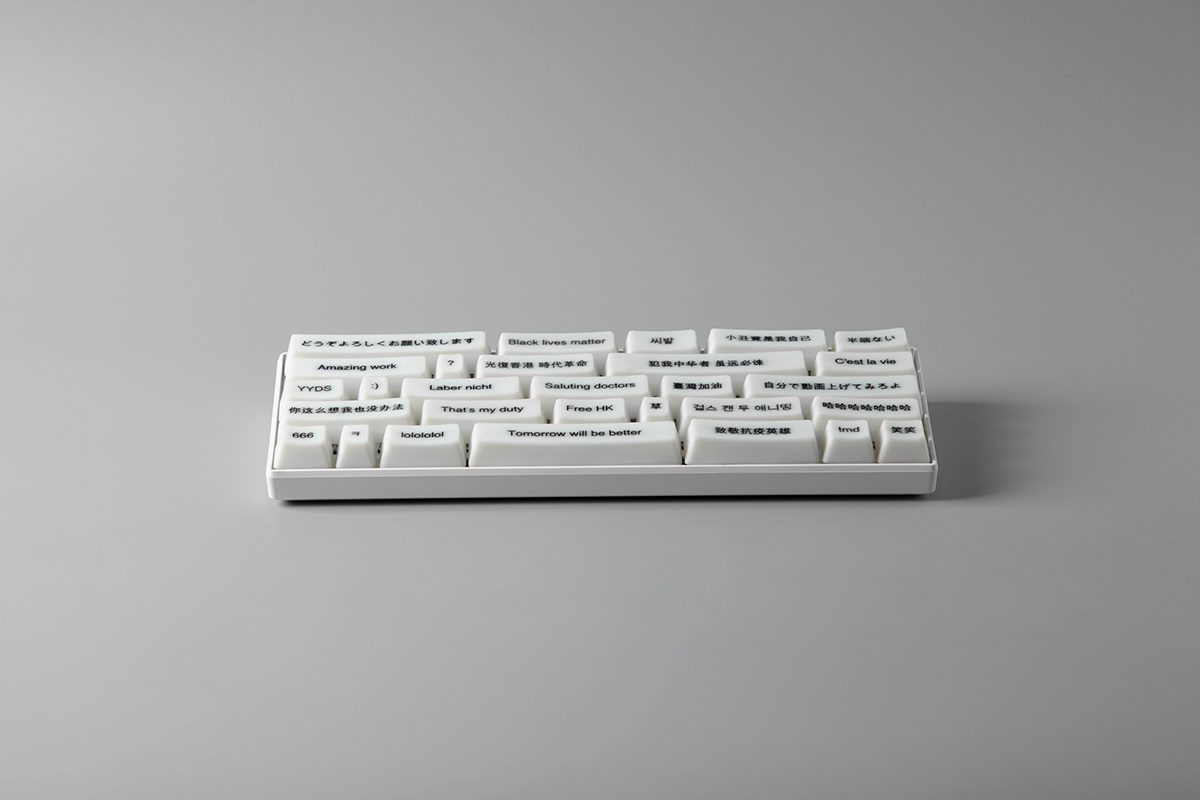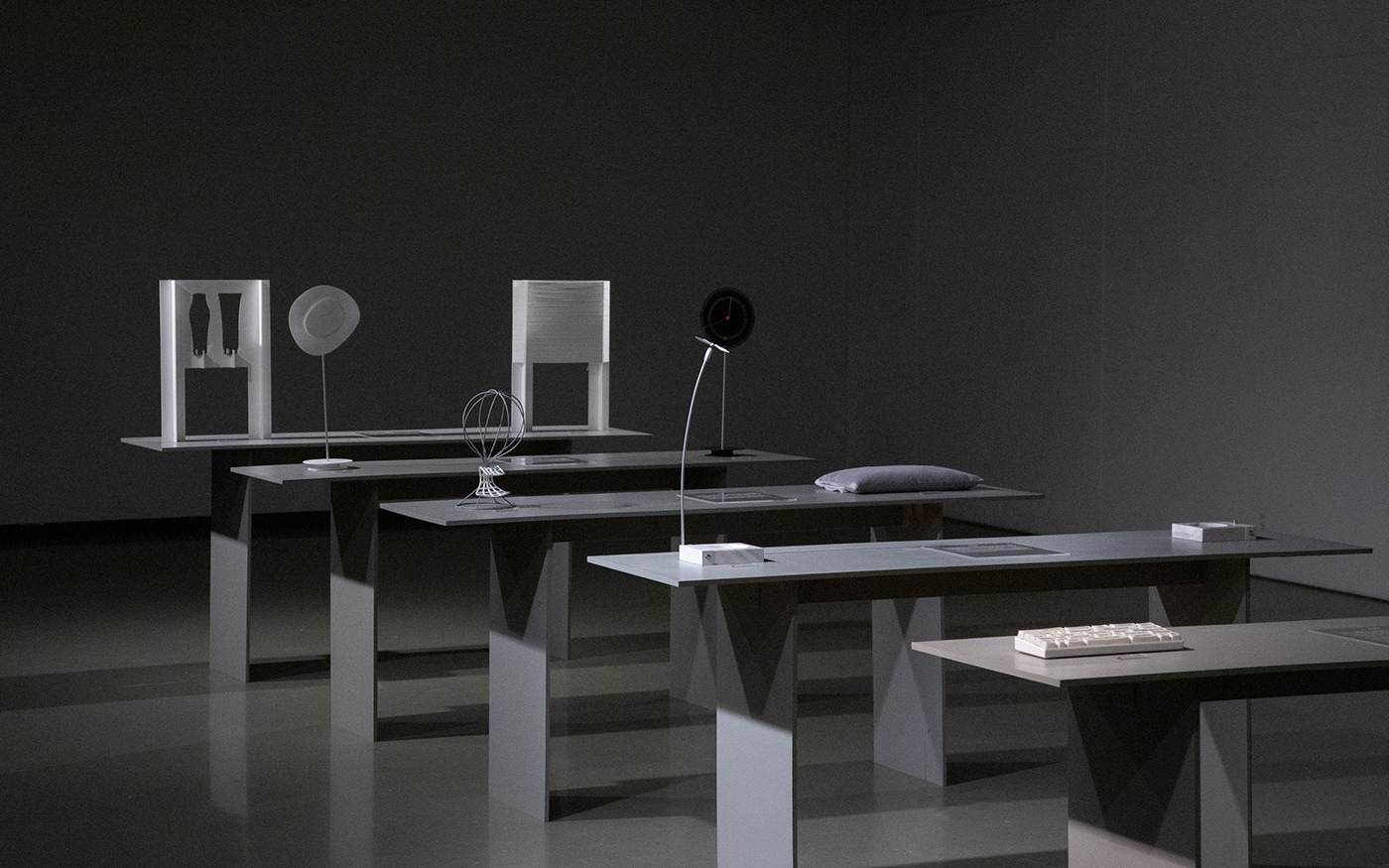Simultaneous Products Series



One-touch
In many people's minds, 2020 will not be a good year. In the wake of Corona, our lives have not lived up to our imagination and there has been much suffering. With the epidemic of disease, social instability has gradually set in, and we all think that in a life where we cannot go outside, we can use the internet to complain about the recession and relieve our stress. The theme of "speaking out" was chosen to focus on the process of changing one's mind when speaking out, and the keyboard, a tool for speaking out on the internet, was chosen as the object of design. The phrase “YI JIAN SAN LIAN" has recently become popular on Chinese social networking sites, referring to the multiple actions you can take with the press of a single button. I researched the comments section of social networking sites and common everyday conversations, and designed the keyboard so that you can type in a single keystroke without thinking. On the other hand, I also came up with the idea of having to ask for permission several times before launching a missile, so I designed a keyboard that looks like a panel of another Chinese word “JIN YAN SHEN XING".

About Simultaneous Products
My research at university level was on the expression of emotions on the edge in everyday product design, which simply falls under the category of discursive design. We often talk about solving problems with design, and nowadays, the design of everyday objects is full of ingenious ideas that bring us pleasure by solving practical problems in use, and that enable us to perceive - use - feel a series of actions. It seems to me that these everyday objects are designing the way we use them, designing our behaviour. I can't help but think that humans are conscious creatures, we have seven emotions, and these emotions accompany our every action and every word in our daily speech and actions. What if some adjectives were added to the process of "problem solving"? It was with this in mind that I began my research project at the Graduate School.
In product design, Design for Minorities is a way of thinking about design with social concern. Is there a marginal area of the spirit among the physically and mentally able, a corner of the world that universal design thinking has failed to notice? As a highly circulated commodity, it is an ironclad rule that more people will accept it, but this is only the design logic of highly circulated commodities. Joining the discussion as an academic, the design of the edge area may also be useful as some reference to aid thinking.
What is the edge? In first year I would explain it as the individual's perception of their own hobbies and habits that contradict the majority. For example, in a society that is used to boiling water, a person like me, who likes to drink ice-cold water, will for a period of time have this limbo mentality: if there is a cup that keeps the temperature in, why not one that dissipates it quickly? Such thoughts. When I was doing my final project in second year, I broke down behaviour through the axes of time and space. An action in a behavioural process triggers a number of additional behaviours or generators for which the individual tends to make a judgement: coordination or antagonism? Such two directions determine the individual's next action. The moment when this judgement of coordination or opposition is issued, I consider him to be a liminal state.
In product design, Design for Minorities is a way of thinking about design with social concern. Is there a marginal area of the spirit among the physically and mentally able, a corner of the world that universal design thinking has failed to notice? As a highly circulated commodity, it is an ironclad rule that more people will accept it, but this is only the design logic of highly circulated commodities. Joining the discussion as an academic, the design of the edge area may also be useful as some reference to aid thinking.
What is the edge? In first year I would explain it as the individual's perception of their own hobbies and habits that contradict the majority. For example, in a society that is used to boiling water, a person like me, who likes to drink ice-cold water, will for a period of time have this limbo mentality: if there is a cup that keeps the temperature in, why not one that dissipates it quickly? Such thoughts. When I was doing my final project in second year, I broke down behaviour through the axes of time and space. An action in a behavioural process triggers a number of additional behaviours or generators for which the individual tends to make a judgement: coordination or antagonism? Such two directions determine the individual's next action. The moment when this judgement of coordination or opposition is issued, I consider him to be a liminal state.
Translated with www.DeepL.com/Translator (free version)
It is fundamental to harmonize functional or psychological rationality with aesthetics and to take into adequate consideration the ergonomics of the process of use. However, I have noticed that the large beer mugs often used in pubs are heavy and difficult to drink from, not because of their ergonomics, but because of how we feel when we drink. Drinking beer is generally thought to be a "solution" to the "problem" of being thirsty and wanting to drink beer, but the adjectival existence of a large mug of beer raises the value of the beer itself, and before solving the problem of being thirsty and wanting to drink, the human feeling of "chugging a large mug of beer" is included. Does the inclusion of the feeling promote human behavior?
So, using the expression formed by adding an adjective before the problem is solved, it occurred to me what might happen to other everyday items. Therefore, I came up with the term "Simultaneous Products". The goal is to express the emotions of the moment, and to do so in a series of works. For this project, I designed products that express two opposing emotions in six different themes: storage, smoking, measuring, sleeping, speaking and appreciation.
So, using the expression formed by adding an adjective before the problem is solved, it occurred to me what might happen to other everyday items. Therefore, I came up with the term "Simultaneous Products". The goal is to express the emotions of the moment, and to do so in a series of works. For this project, I designed products that express two opposing emotions in six different themes: storage, smoking, measuring, sleeping, speaking and appreciation.
There is another reason that prompted this production. I think that in China, where fast economic development through strong government administration has become the country's primary goal, excessive consumerism has occurred and with it a single aesthetic has narrowed the creativity of society. In the process of my coming from China to study in Japan and having a new awareness of product design, I became strongly aware of speculative thinking and started my master's research on speculative design. In this context, there are many designs that make people reflect on the environment, politics and law in the far future by discussing them. If the social responsibility behind these works is to help us as design researchers understand and foster contemplative thinking in non-specialists, are these themes maybe too serious? We want people to think about the development of society from their own lives by observing the things they touch everyday and the small possibilities they open up.
My own understanding of the term "parallel world". It is often said that parallel worlds exist objectively, but I believe that their existence is not spatial after all, but rather that each moment of decision appears to be a multiple parallel world, and that if we accumulate the act of entering one of these worlds, we build it into our lives. This is how we understand 'parallel worlds', as the layers of branches become the spine that supports life.
My own understanding of the term "parallel world". It is often said that parallel worlds exist objectively, but I believe that their existence is not spatial after all, but rather that each moment of decision appears to be a multiple parallel world, and that if we accumulate the act of entering one of these worlds, we build it into our lives. This is how we understand 'parallel worlds', as the layers of branches become the spine that supports life.


Design & Photograph
Based in Tokyo
In the future, we imagine that a growing proportion of the market will be made up of individual brands, such as jewellery and fashion designers, who develop and sell their products on a small scale, including through D2C channels. This idea is not to deny the traditional design thinking, but to add a new way of thinking.
Connect
Mail: qihan666@gmail.com
Website: http://hanqi.design
Tokyo, Japan
Designed by HanQi 2021


